The science-fiction action game Returnal, out today for PlayStation 5, drops you all by your lonesome on a haunting, uncharted exoplanet. It’s a gorgeous, fresh, fascinating game that’s well worth sticking with. It’s also quite difficult. As with any game built around a live-die-repeat structure, you will die — a whole, whole lot — on your escapades through Atropos. Here’s how to make sure that doesn’t happen, or at least doesn’t happen as often.
Read: Kotaku’s review of Returnal.
Be patient.
After spending several dozen hours with Returnal, the single biggest piece of advice I can impart is this: Slow down. Yes, Returnal moves at a breakneck pace, which might inspire you to do the same, but you’ll have more success if you tap the brakes a bit. Stand by the door of each room and thin the crowd a bit before diving in. Learn the patterns of each enemy type. Focus more on dodging enemy attacks and less on dealing damage. Play carefully, and you’ll make it further than you would otherwise.
Be lucky.
Every run in Returnal — from the layout of levels to the items you’ll find to the enemies that spawn — is randomised. When you die, you start from a clean slate, and the whole world is reset. You could play like a champ, and a bad spree of items will eventually spell your downfall. Conversely, you could play like garbage yet stumble through with a killer set of gear. Once you accept and internalize that your fate is largely out of your hands, much of the natural frustration that stems from those first few runs will fade. (If you’re not feeling a particular loadout, you can always restart your run via the pause menu.) Anyway, good luck! You’ll need it.
Learn what everything means.
Returnal neglects to use long-established conventional gaming terms like “health,” “accessories,” and “gold.” (Seriously, why is it so difficult to just call health “health”?) As you’re getting your feet wet, learning a new glossary of foundational words can trip you up. It helps immensely to familiarise yourself with the basics:
- Integrity: Returnal-speak for “health.”
- Silphium: Restores integrity. Comes in small, medium, and large, and heals you accordingly.
- Silphium resin: Find three of these to increase your health integrity by 5 per cent for the duration of a run. Big ones count twice.
- Artifacts: Accessories that grant stat bonuses. You lose them when you die.
- Parasites: Double-edged accessories that give you a helpful perk but saddle you with a major restriction in turn. Like artifacts, these disappear when you die.
- Consumables: One-time use items (unless you get a parasite that’ll let you use them twice).
- Obolites: Currency used to buy artifacts and consumables in each run. (You can’t, as far as I’ve seen, buy parasites.) You lose it all when you die.
- Ether: Currency used for a whole bunch of stuff, which we’ll get to momentarily. You do not lose it when you die.
Malignant items and chests typically aren’t worth it.
Returnal features a mechanic called “malignancy.” Chests can be malignant. Some items, like keys — used to open up locked chests and unlock optional pathways — can, too. You can interact with these objects as normal. You’ll then stand a chance of getting saddled with a suit malfunction, which essentially puts a restriction on you (say, your dash’s cooldown is extended by a few seconds) that won’t dissipate until you complete a task (find 200 obolities).
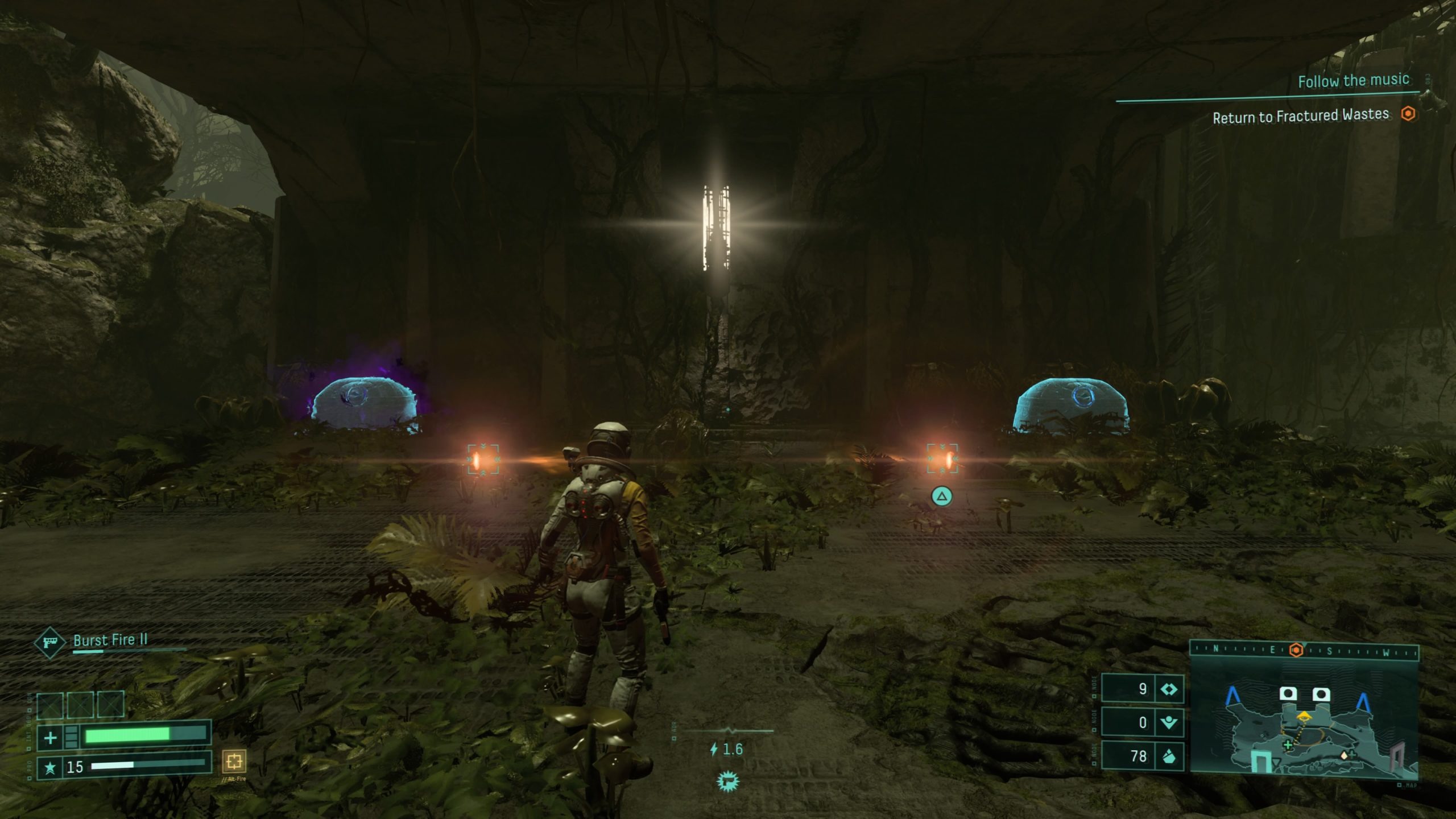
I’ve found that it’s very rarely worth it to go for the malignant stuff. For instance, a malignant chunk of obolites might give you, like, 35 obolites — a pittance when most items cost more than 200, and when you’ll earn that amount anyway by clearing a room of enemies. A malignant chest could contain a sick rocket launcher, or, who knows, yet another Ground Spike item (you don’t want these). The risk just isn’t worth it.
Don’t let yourself get inflicted with more than two suit malfunctions at once.
Once you pick up a third malfunction, you’ll suffer a “critical malfunction” and lose one of your artifacts. Not cool!
Ether is arguably the most valuable resource.
Many roguelikes feature some sort of meta-progression that transcends runs. Returnal’s is contingent on Ether. In the starting area, you can dump some into a machine called the Cthonos. This will spawn an artefact or consumable, which will then add it to the random pool, meaning it stands a chance of showing up in future runs. (The more you use the Cthonos, the higher the costs get.)
That’s not all Ether is used for. You can use it to remove malignancy from malignant items, making them safe to pick up. It’s not not worth it in my mind, since Ether is so very rare and malignant items so very common. Better to save it for the permanent upgrades and for activating this frightening machine:
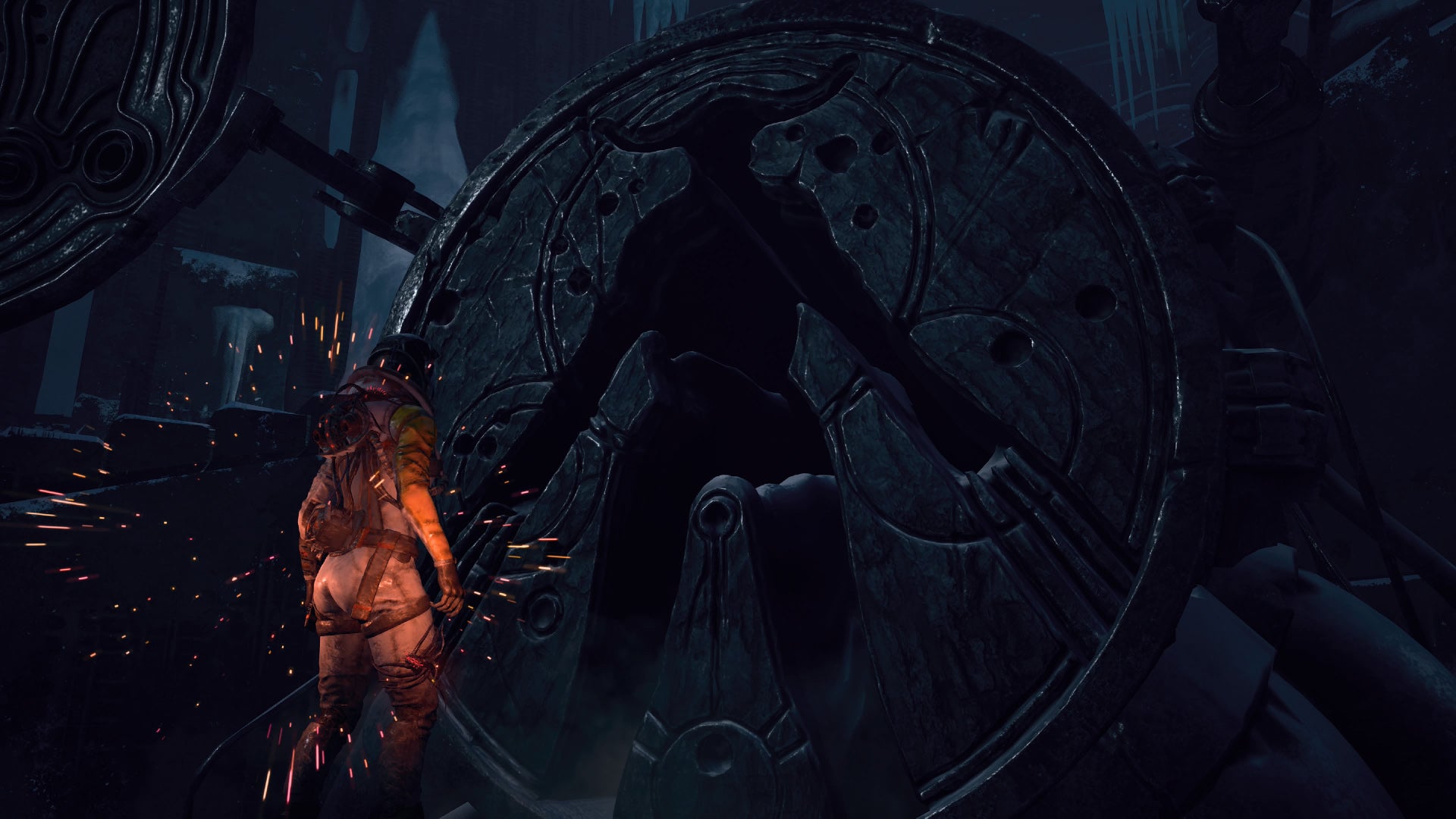
Every biome features a machine called a reconstructor. For six Ether you can establish a respawn point. If you’re having a good run — especially in the later biomes, where Ether is marginally more plentiful — it’s worth the cost.
Don’t write off the parasites.
Many of the parasites in Returnal inflict flaws that are too negative to make them worth it, but every now and then, you’ll come across one that’s game-changing in a good way. For instance, it could have a perk that automatically restores health when you dip below a certain threshold. And the drawback could be that you’re more likely to trip a malfunction when you pick up malignant items. In that case, all you have to do is…not interact with malignant objects, which you shouldn’t do anyway, because, again, they’re usually a bust.
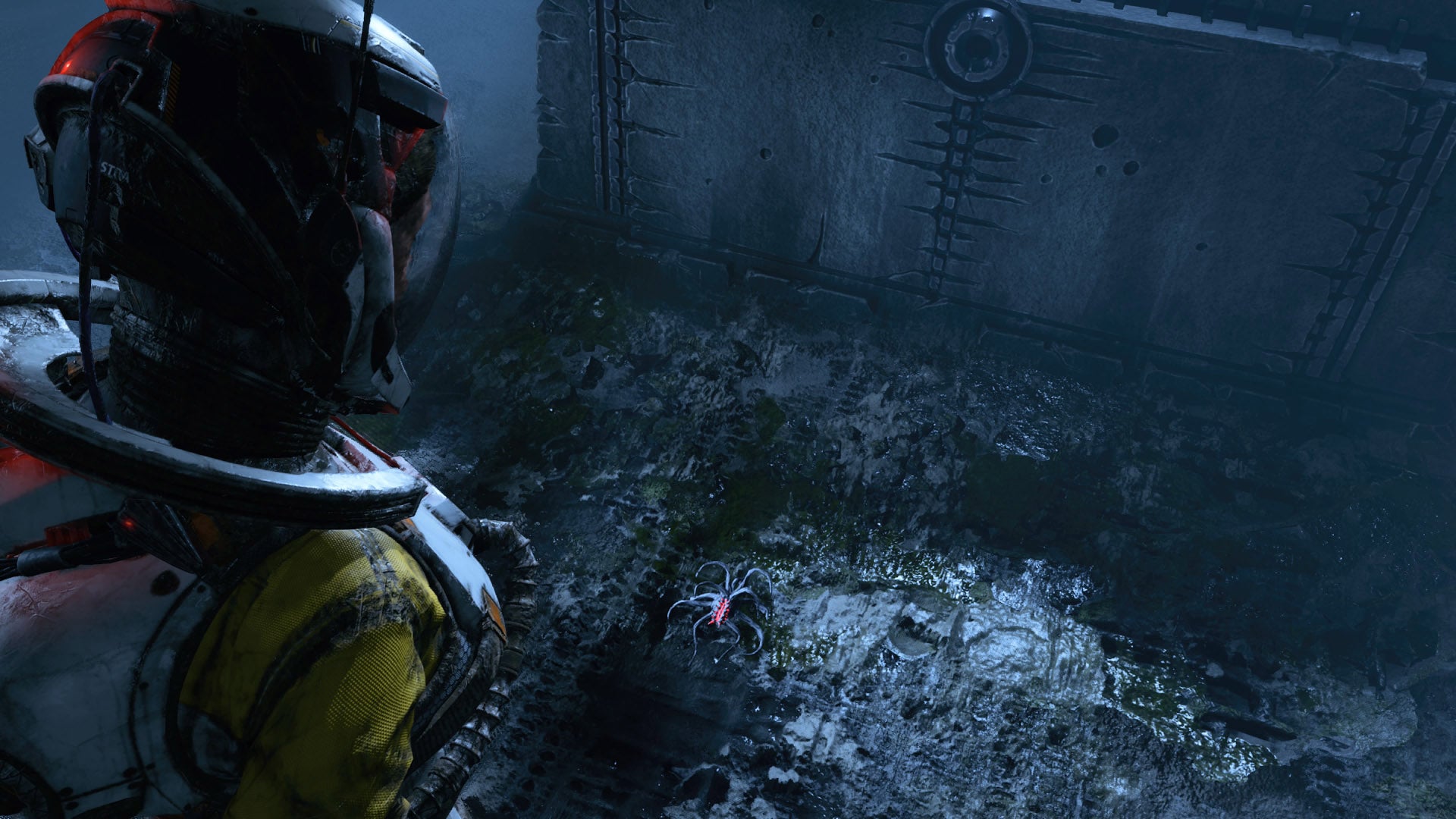
Point being: Don’t expect the parasites to automatically be more bad than good. Read through the descriptions before venturing off.
Weapon proficiency doesn’t make you any better at shooting weapons.
Instead, it dictates the efficacy of any weapons you’ll find in the future. Each weapon you find is affixed with a number, which allocates points at random across three stats — bonus damage, plus two weapon-specific stats like fire rate (machine guns) or effective range (shotguns). The higher your weapon proficiency, the higher that number will be.
By the way, you can only carry one weapon at a time.
After you beat the Crimson Wastes, you can skip the Crimson Wastes.
You’ll always have to play through the first biome, the Overgrown Forest. But once you beat Ixiom, the boss of the Crimson Wastes, you’ll get a grappling hook, which allows you to access the Derelict Citadel without having to retread the entire desert biome each run. The tradeoff, of course, is that you’ll miss out an entire biome’s worth of upgrades. Your choice.
Worth mentioning: Once you make it to the Derelict Citadel, you’ll get an item that will boost your weapon proficiency to an area-appropriate level, no matter how low you are when you reach the region. (As with much else in this game, your weapon proficiency resets upon death.)
Silphium will always be silphium resin when you’re at full health.
Silphium and silphium resin look exactly the same. At full health, silphium will always convert into silphium resin, which is nice, because you don’t need the healing so you might as well expand your integrity reserves. When Kotaku asked Housemarque to detail how Returnal’s health system works, studio representatives said that “after [you take] a hit, all resin will be found as silphium.”
Yeah…About that…
It’s unclear how exactly this switch is calculated on a game-design level, if there’s a hidden system in the background that converts silphium into silphium resin as you walk into a room or defeat enemies or whatnot. I can say that I’ve certainly been at less than full health and have picked up silphium, hoping for a salve, only for it to actually be silphium resin. (Housemarque has not yet responded to follow-up clarifying questions.)
But I’ve yet to experience the reverse; over the course of my time with the game, silphium has indeed spawned as silphium resin when I’m at full health. There’s a strategy in leaving all the silphium and silphium resin before picking it up, memorising where you’ve left it, and then looping back when you’re desperately in need of a pick-me-up. Other times, you just want to boost your total health then and there, so you take it.
There’s a colour-coded shorthand for basically everything.
Everything — and I mean everything — in Returnal is colour-coded. Pickups are identifiable by vertical beams of light. While you’re dashing around levels, understanding what each colour signifies can serve as an immediate visual cue to indicate which items are worth sprinting toward.
- Blue: Weapon proficiency upgrades.
- Green: Always to do with health. They’ll either be silphium (healing items) or silphium resin (health bar upgrades).
- Orange: Consumable items.
- Red: Weapons.
- Purple: Either Ether or malignant items. (You have to hold Triangle down to pick up purple stuff anyway, so don’t worry about grabbing anything by accident.)
- Purple but with a barely perceptible orange tint: Parasites.
On your map, doors are colour-coded, too:
- Dark blue: Optional pathways. Definitely worth exploring.
- Light blue: Primary pathways. Follow these to end up where you need to end up.
- Grey: You’ve already gone down these.
- Red: Boss chambers, or pathways that lead to boss chambers.
- Yellow: Challenge rooms.
The challenge rooms, by the way, are almost always worth taking on. You’ll face three waves of enemies, each more intense than the last. For your efforts, you’ll get a stat boost and a minor armory of high-powered weapons to choose from, plus a ton of silphium resin (if you don’t use it during the fight to heal up).
Fabricator shops only stock one of each item.
Returnal dubs its shops “fabricators.” Each biome has one, and features four pedestals that you can interact with to purchase items. One always appears to sell a silphium vial; the other three are a mix of consumables and artifacts. Just know that, once you buy any of the items, it won’t restock during that run. Fabricators are also accompanied by a fifth pedestal that, for a heftier fee, will increase your maximum integrity by 25 per cent — and fully heal you, too.
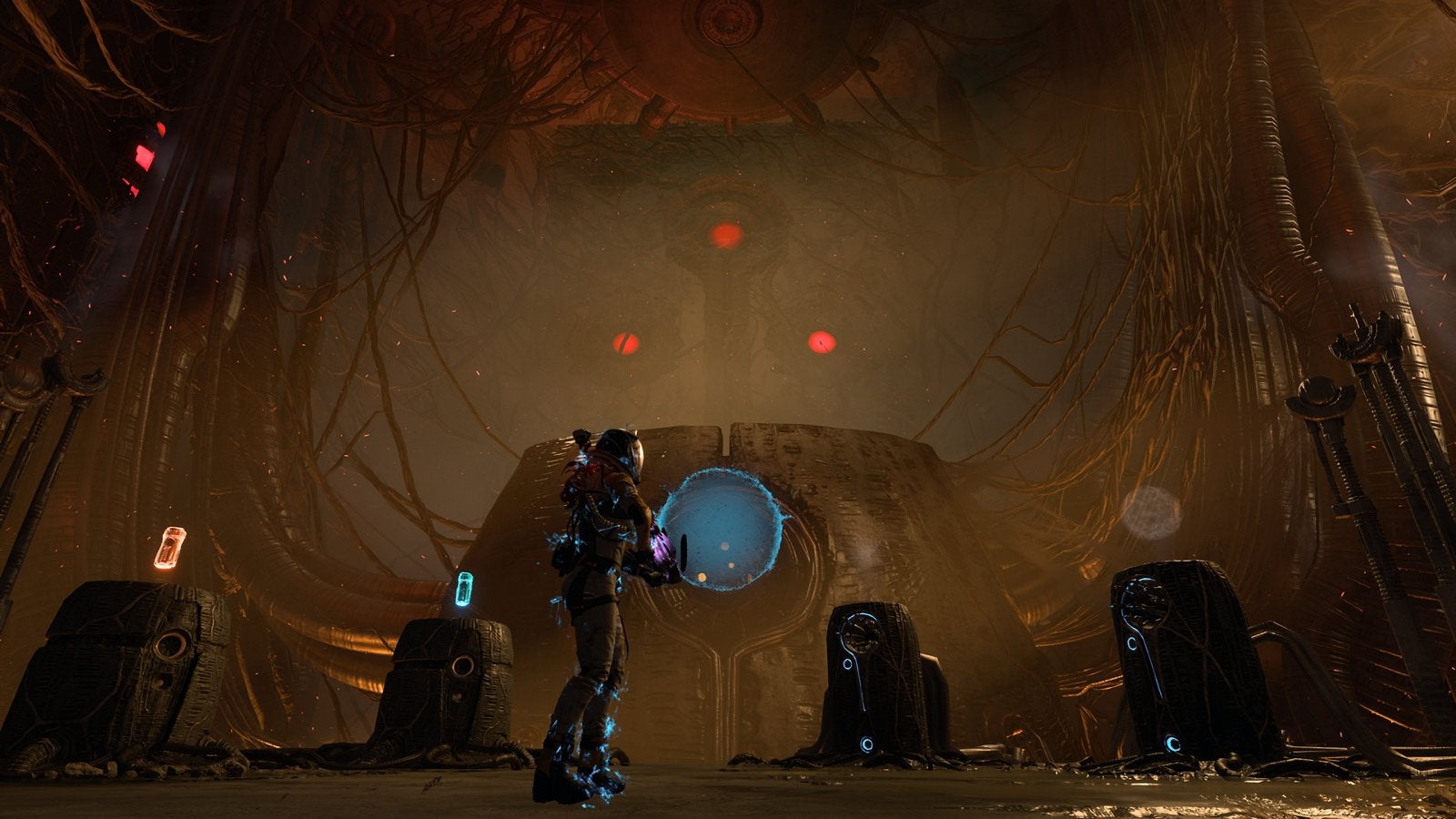
While you’re exploring, you might stumble across individual pedestals, but that’s not guaranteed.
The Astronaut Figurine will revive you.
There are one metric gazillion artifacts in Returnal, and while most of them come with handy descriptions, that’s not always the case. Sometimes, the flavour text can come off as frustratingly vague. Take the Astronaut Figurine artefact, for example: “It will not let you go.” Huh. The heck does that mean?
The Astronaut Figurine is essentially an instant revive. Few items are more invaluable, particular when you’re figuring out the boss fights. If you see it in the wild — either in a fabricator shop or as a randomised pick-up — do whatever you can to get it.
Always go into the secret rooms.
Throughout Returnal, you’ll find statues of “sentients” — the intelligent beings that lived on Atropos before the game’s events. Some of them have a little golden orb in front. They look like this:
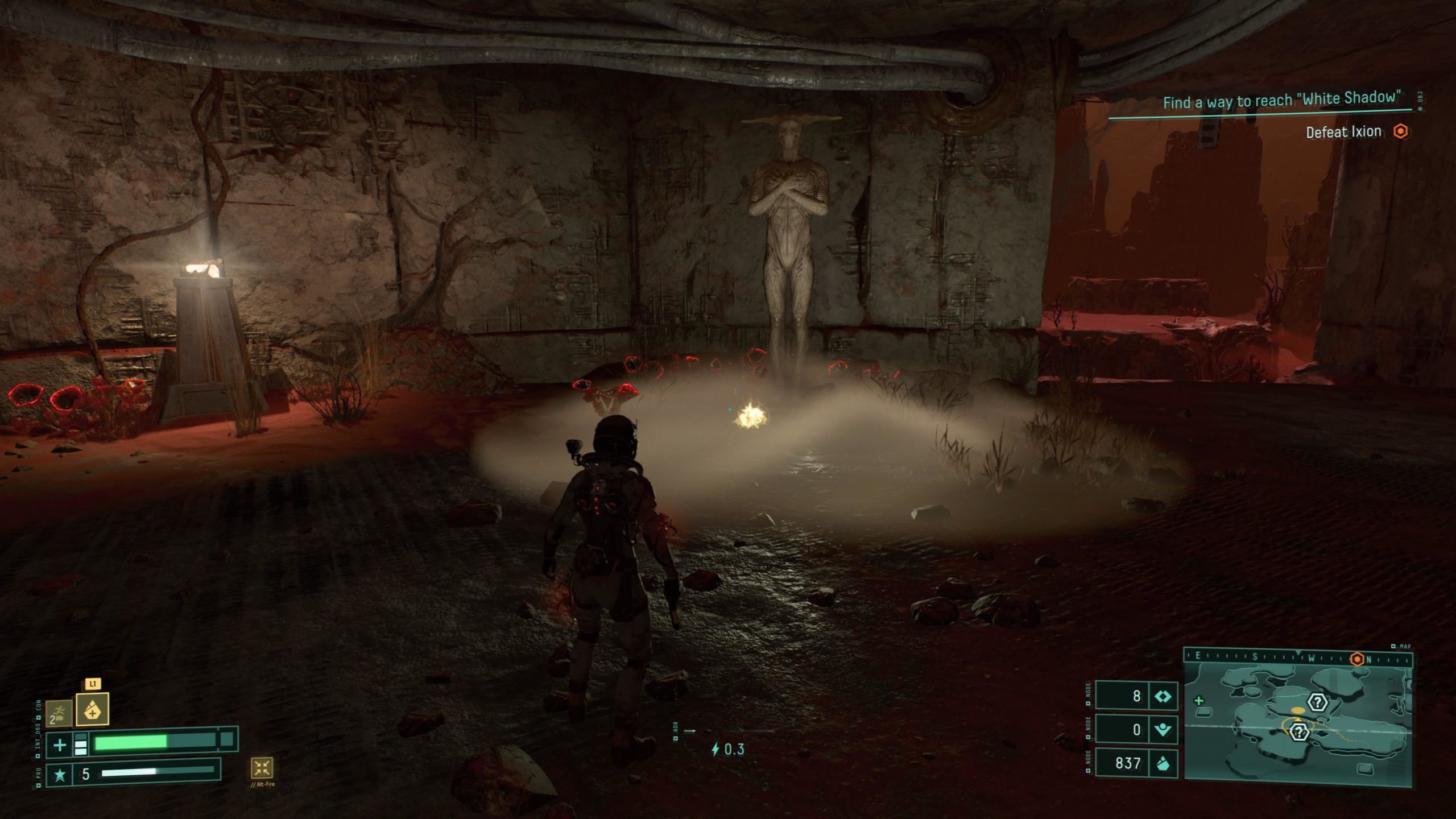
These lead to hidden treasure troves. Maybe you’ll find a room with four chests, or a room littered with obolites — like those chambers stuffed with gold coins you see in Mario games — or a room with three weapons that may or may not be higher-leveled than your current one. It’s always worth rolling the dice and checking these rooms out.
In rare instances, you’ll find a mini-boss that, to be honest, will likely swirly you so hard you have to start fresh. You can avoid these encounters while still scouting each room:. Just stand completely still for a second when you first enter. The boss won’t spawn until you move. If you see nothing of interest, turn on your heel and hop back into the portal. Or go forth and fight! Your funeral. Well, not really a funeral, since Returnal is set on a time loop, but you get the point. (If you can somehow kill these living, breathing nightmares, you’ll get a high-level weapon.)
But don’t go into the secret rooms if…
…you’re afflicted with a malfunction or have attached a parasite that causes fall damage. You’ll take damage, because it’s a looong drop into these hidden stashes, but that fall plays out as a cinematic animation. I’ve tried a few times to dash during the fall, as has a colleague, and neither of us have had any success. You don’t regain control until you’ve already hit the ground and lost, like, a third of your health.
Save the “device” rooms.
Returnal features two types of “device” rooms, which are devoid of enemies but contain a concrete bed…thing that seems guaranteed to cause lower back pain. These come in two colours. Green devices will fully heal you and also increase your integrity. Red ones will hurt you but give you a free artefact. Leave these be until you get a grasp on how your run’s going. If you’re doing well, sure, hit up the red one. On the other hand, if you’re getting walloped, maybe make your way to the green one.
Lightning round of combat tips!
Combat can quickly get hectic, and no two encounters will be the same. Plus there’s that whole matter of “accounting for different playstyles.” Still, a few general rules apply across the board:
- Dodge through projectiles, not away.
- Unless those projectiles are purple, as you cannot dodge through purple lasers and energy balls. Time your jumps!
- Some enemies die with a massive explosion. Be wary.
- When an enemy is targeting you with a laser, you’re not taking damage yet. You have about three seconds to dodge out of its blast.
- Turrets are extremely weak to melee attacks.
- Also: Take turrets out first.
- You can stun most enemies, including the largest ones, with a melee attack.
- When you get the Icarian Grapple (aka the hookshot), use it constantly. Zip around these stages like they’re Doom levels.
- The map is extremely helpful! It’s hard to assess the exact location of every enemy at all times while navigating a hectic three-dimensional space crowded with enormous deadly neon orbs. Glance at the map (lower-right) every so often. It can help you get a read on the environment.
- Aiming down the sights will reveal enemy weak spots, highlighted by an unmissable red box.
- On the flip side, you’ll narrow your field of vision and move a bit slower. It’s often more helpful to shoot from the hip.
Keep calm and carry on.
Ignore the passé nature of this over-Pinterested catchphrase. It’ll get you through. Returnal, you’ll find after playing for six minutes, is a punishing game. And unlike many other games, it never gives you an inch. You die, you get frustrated, you get up, you go again. But you’re seeing red, tired, beat down. You make careless mistakes. You die again.
If you feel yourself slipping, just take a deep breath and walk away for a bit. Taking a break for even an hour or two — or, hell, for the rest of the night — to clear the mind and let the cortisol settle is the best upgrade you can find. And better yet, you don’t even have to look for it in the game.
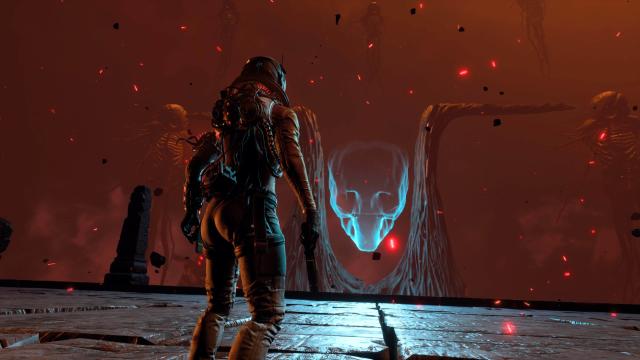
Leave a Reply